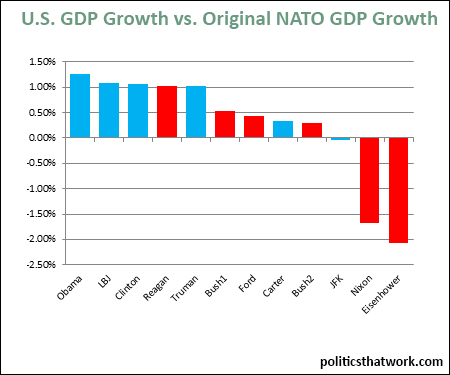
Description: This graph shows how the U.S.'s GDP growth compares to the GDP growth of the other original NATO members. A bar at the 0% line with no height would reflect that the average GDP growth during that president's term was exactly the same as the average GDP growth of the other original NATO members. Bars above the zero line indicate that the U.S.'s gross domestic product grew more rapidly than the gross domestic products of the other original NATO members. For example, if the U.S.'s GDP grew 4% and the other NATO countries' GDP grew 3%, the graph would show 1%. Likewise, bars below the zero line indicate that the GDP of the other NATO countries grew faster than the U.S.'s GDP.
The original NATO members are the United States, Canada, Belgium, Luxembourg, Denmark, France, Iceland, Italy, the Netherlands, Norway, Portugal and the United Kingdom.
Sources: USDA ERS University of Groningen
Data: Excel
Last updated: April 14, 2015





